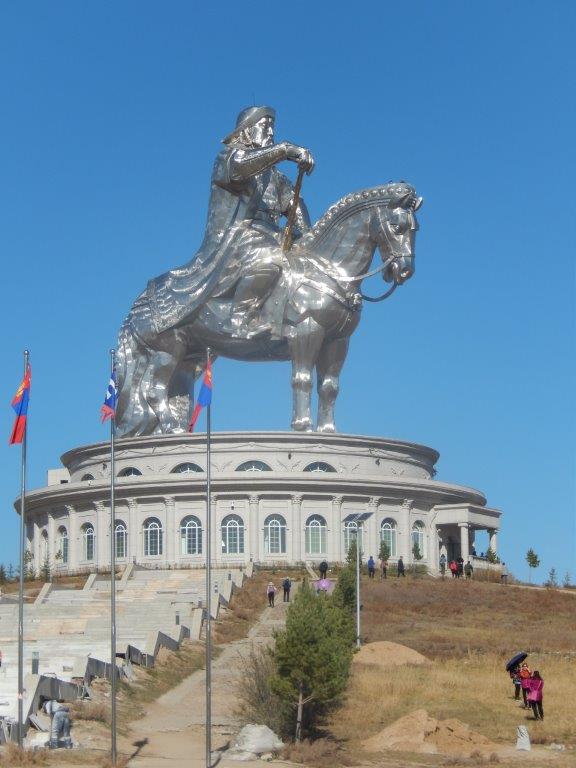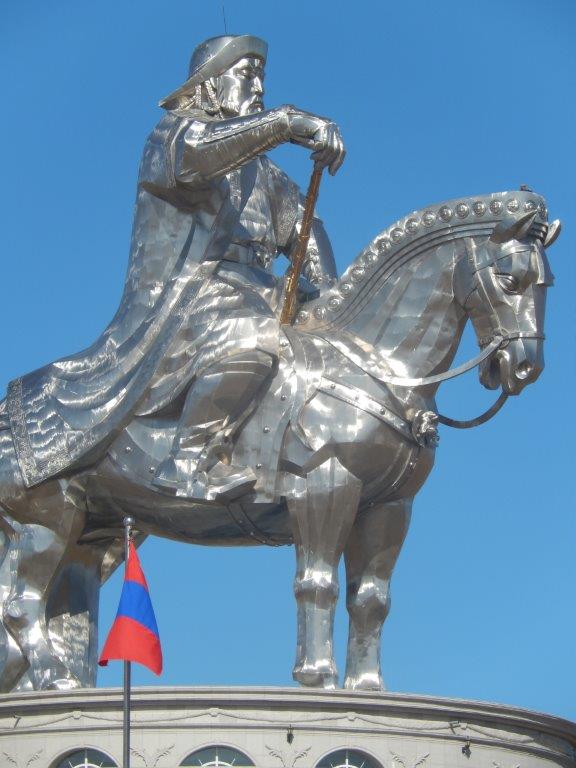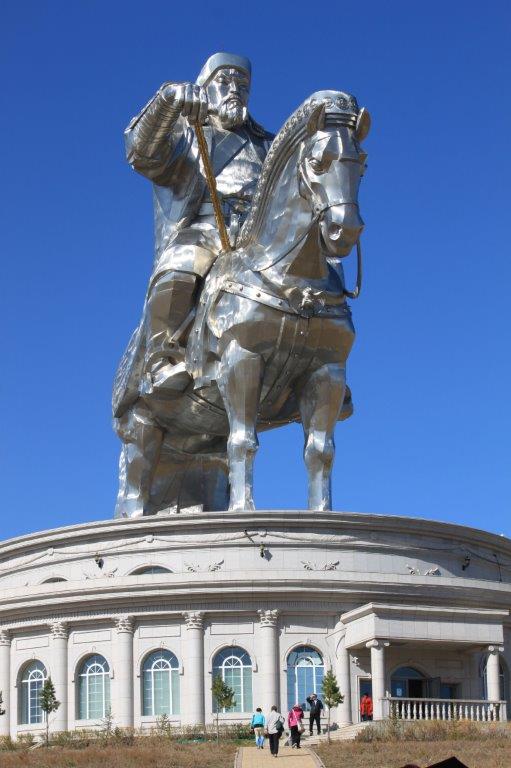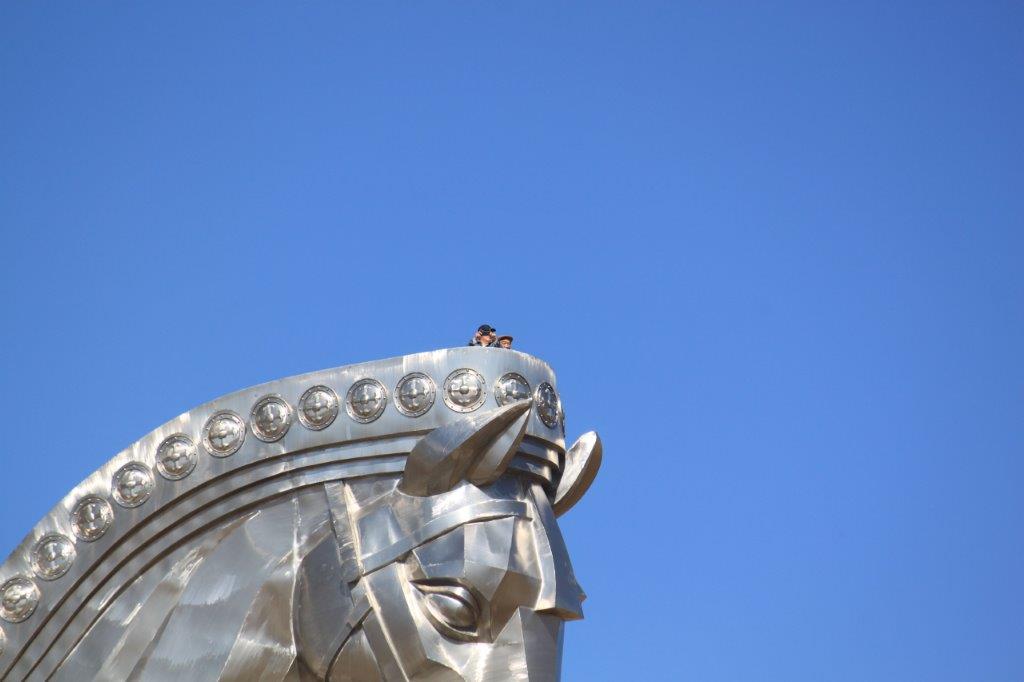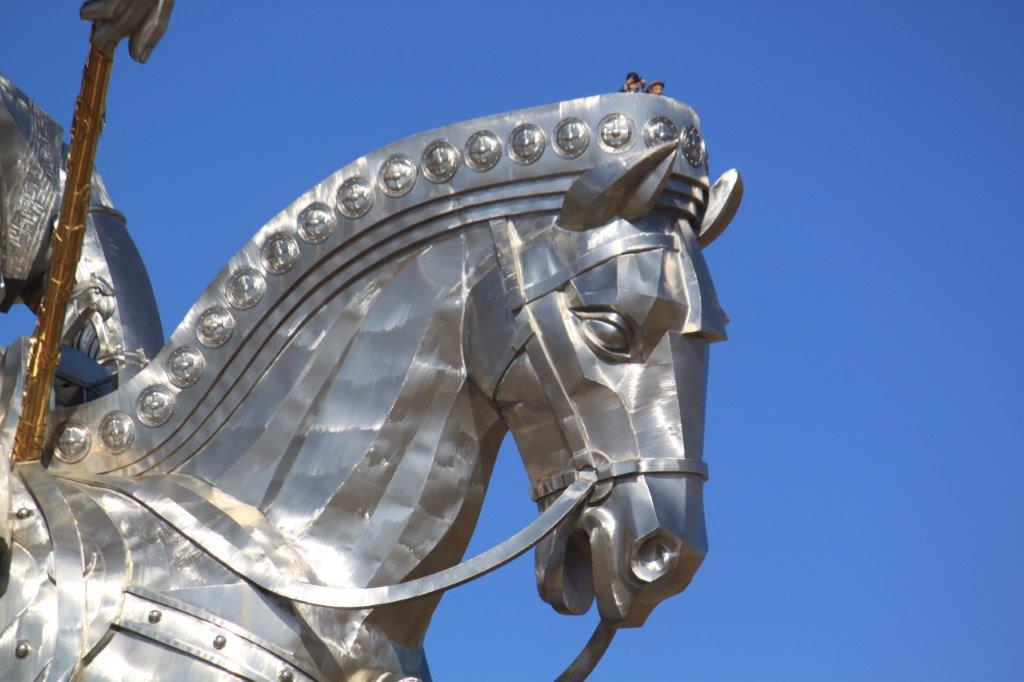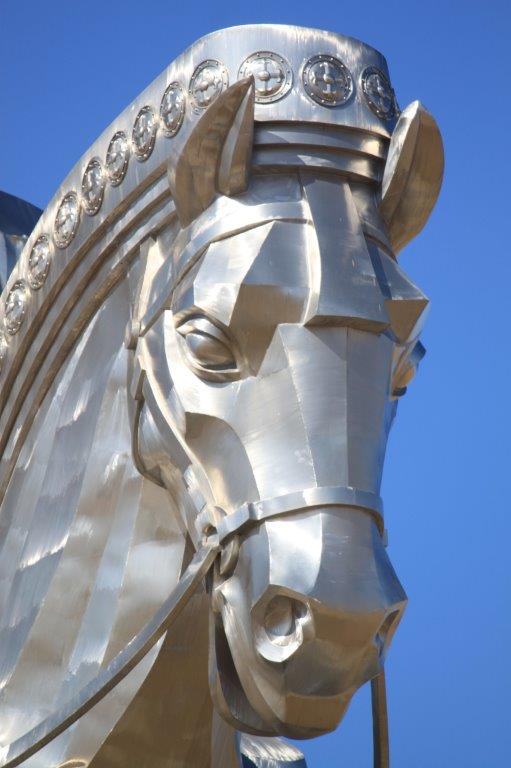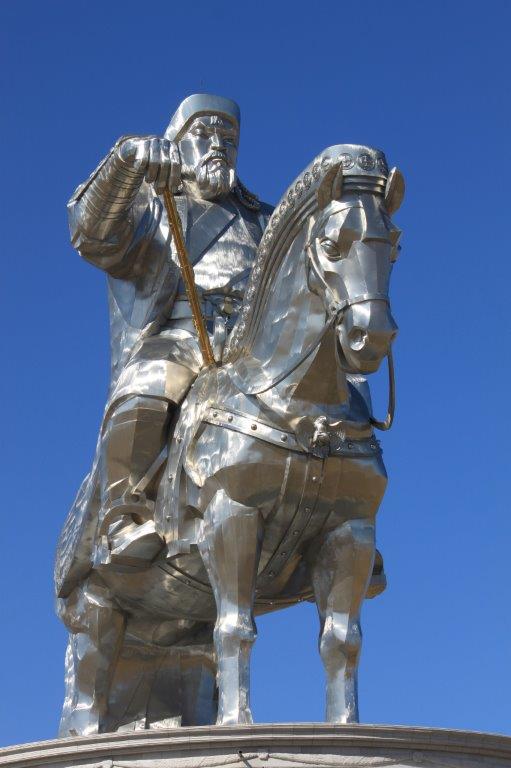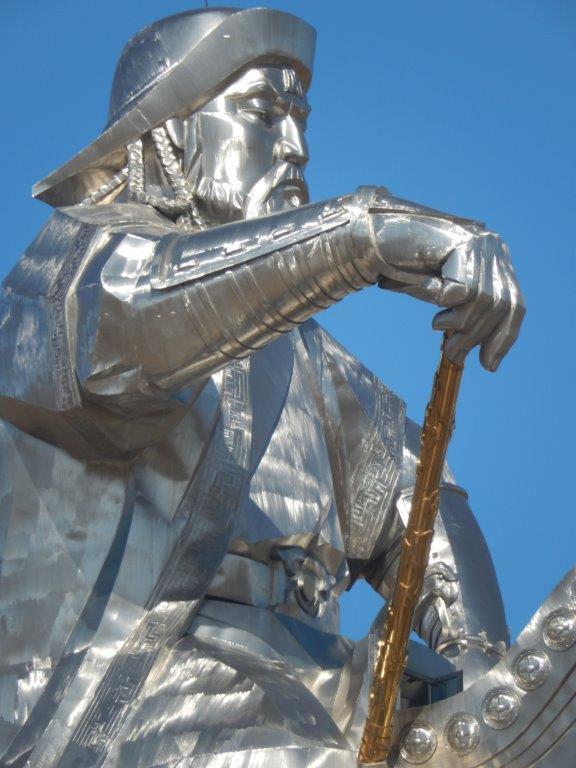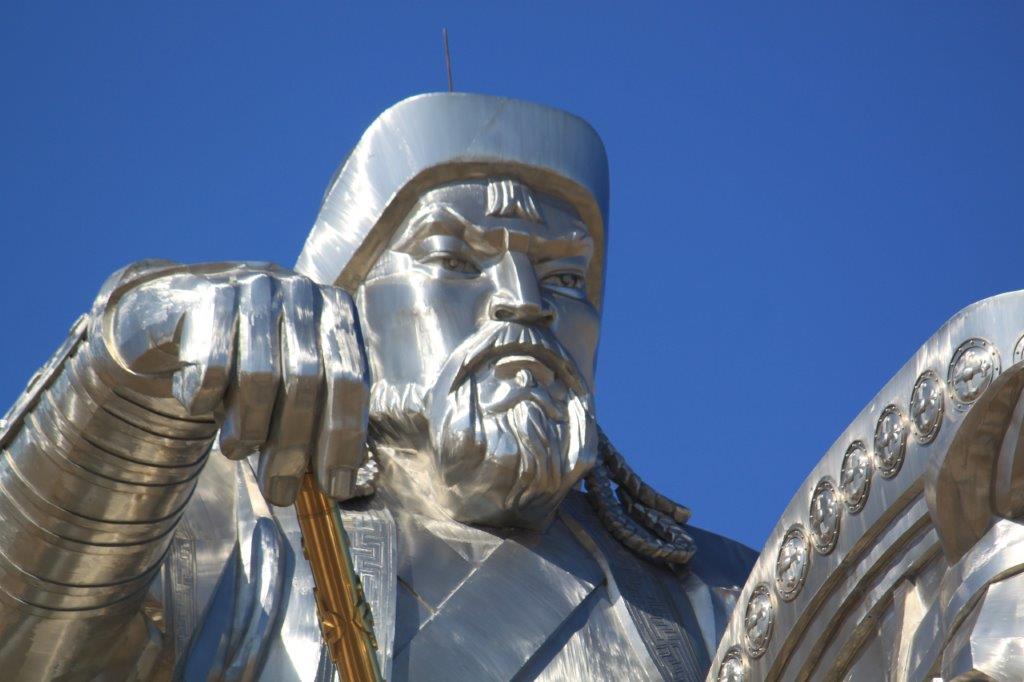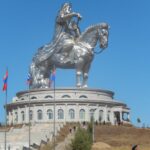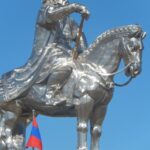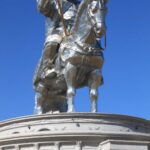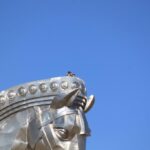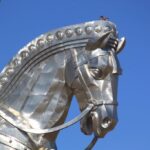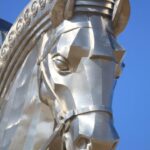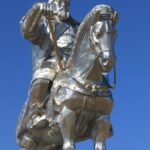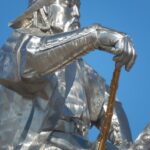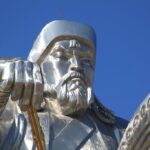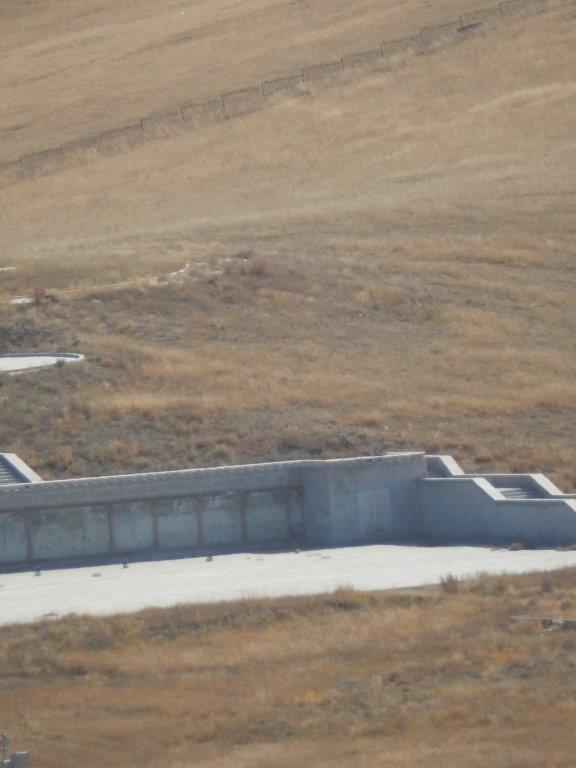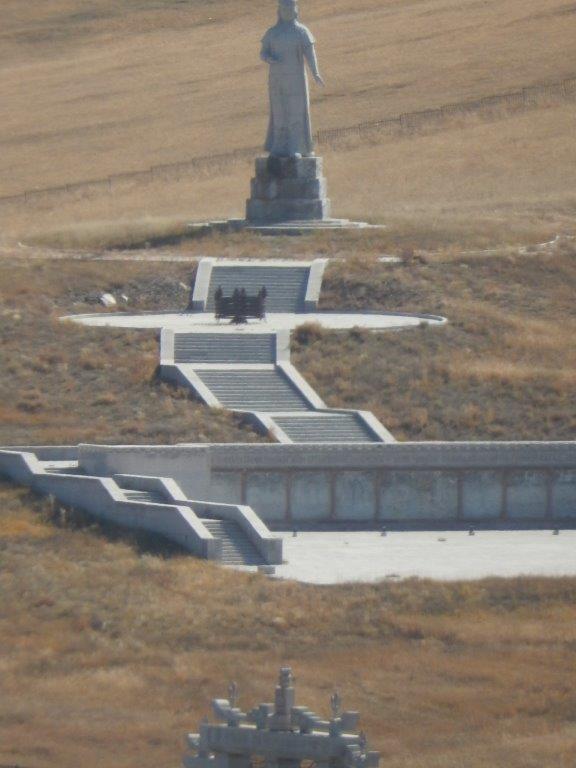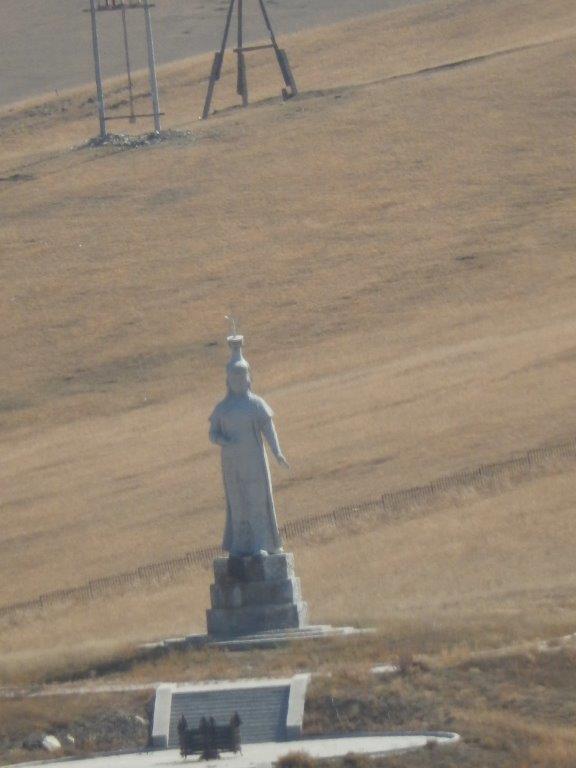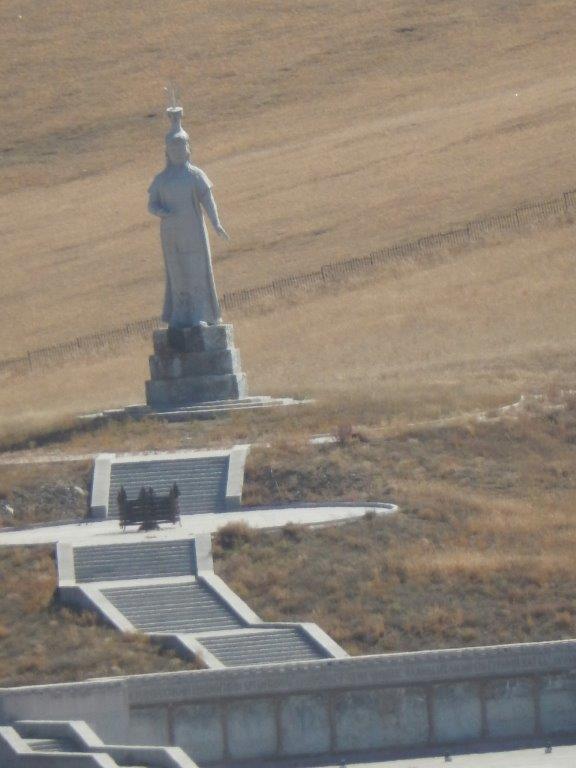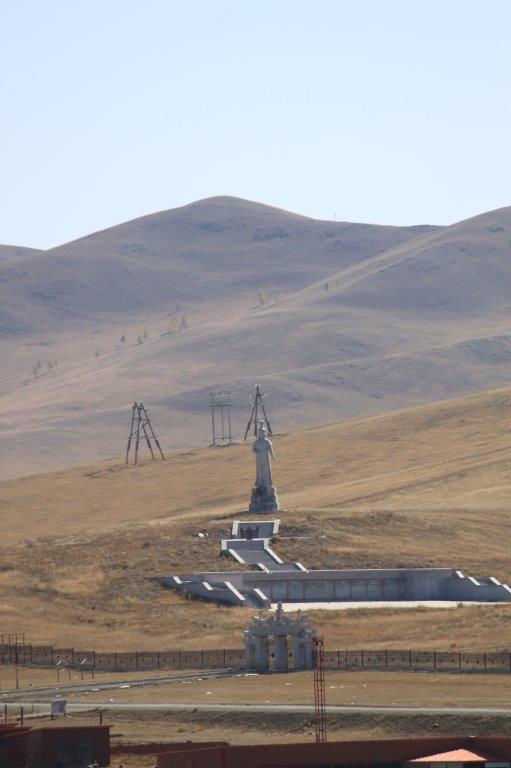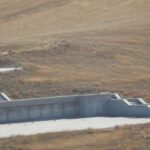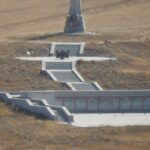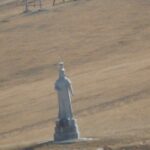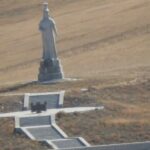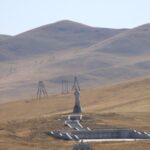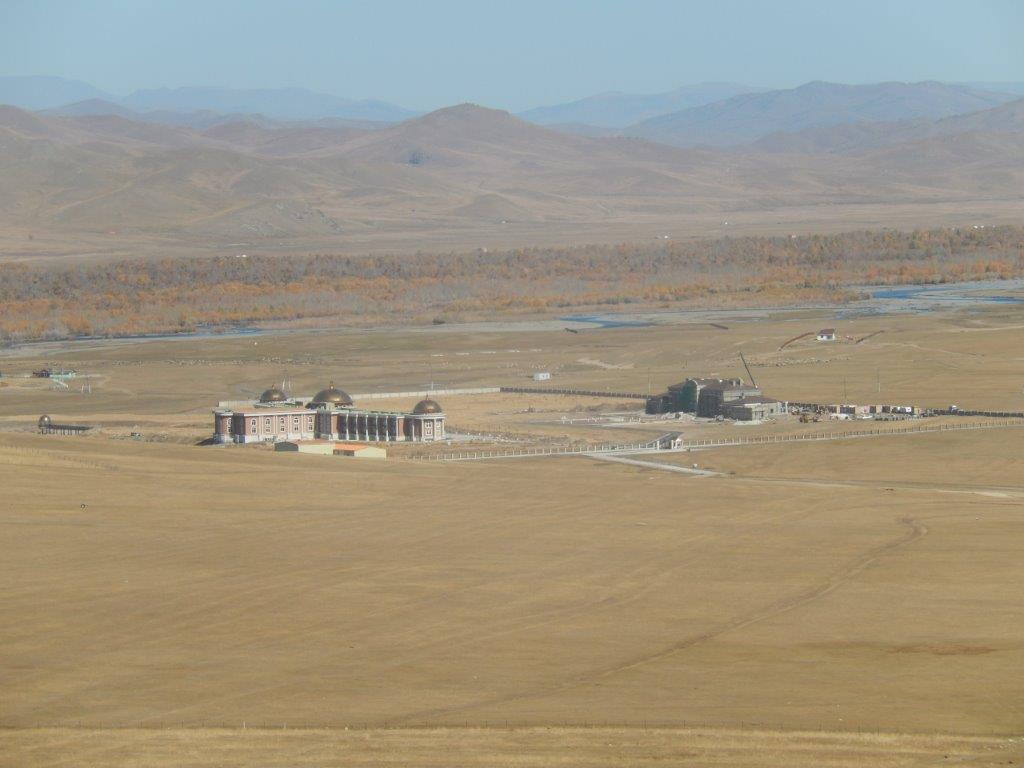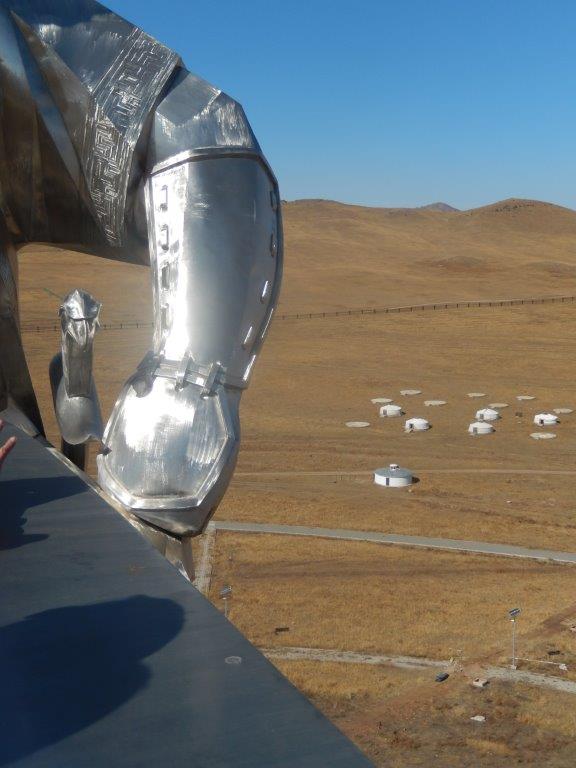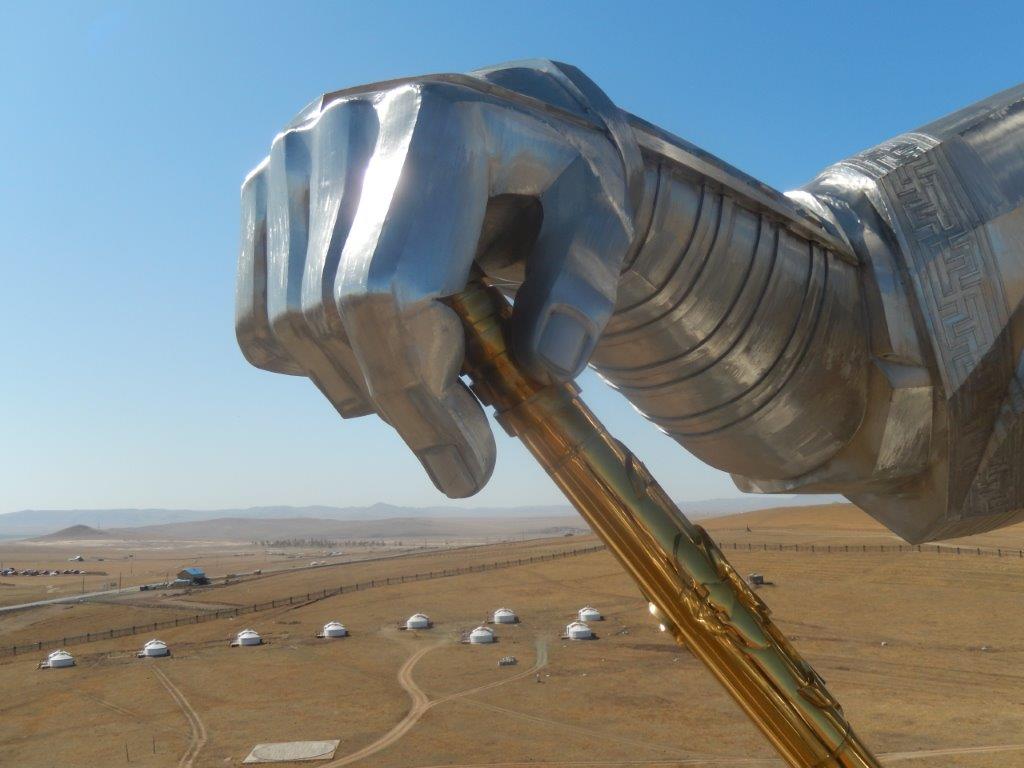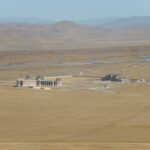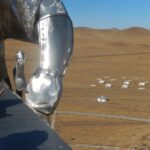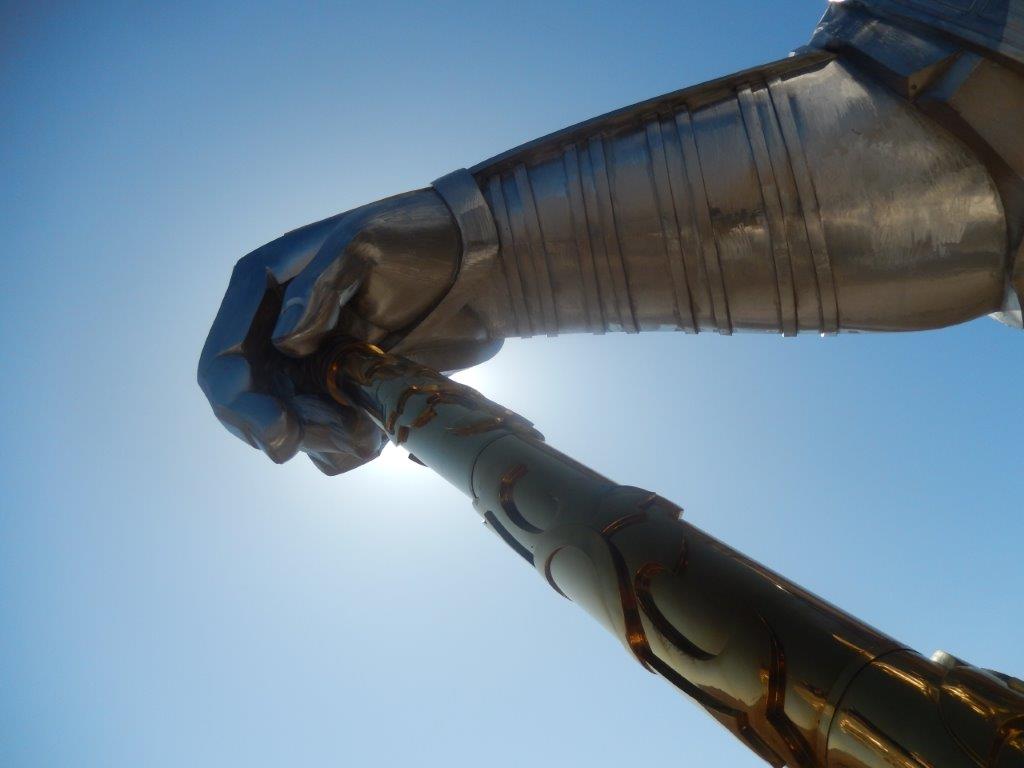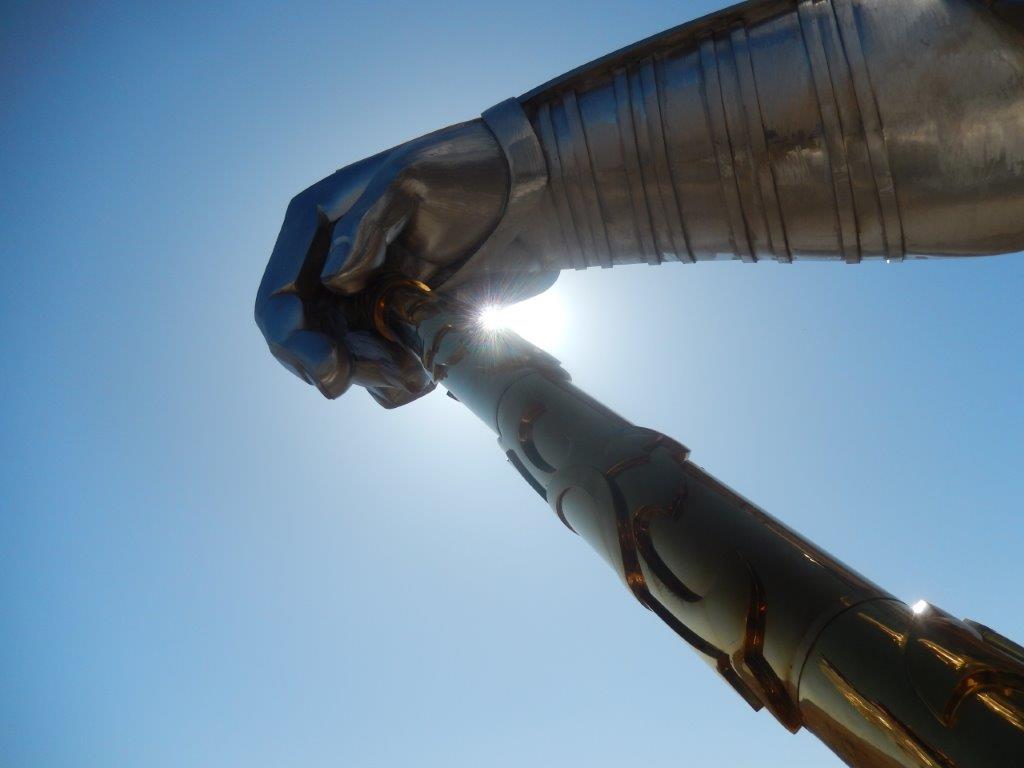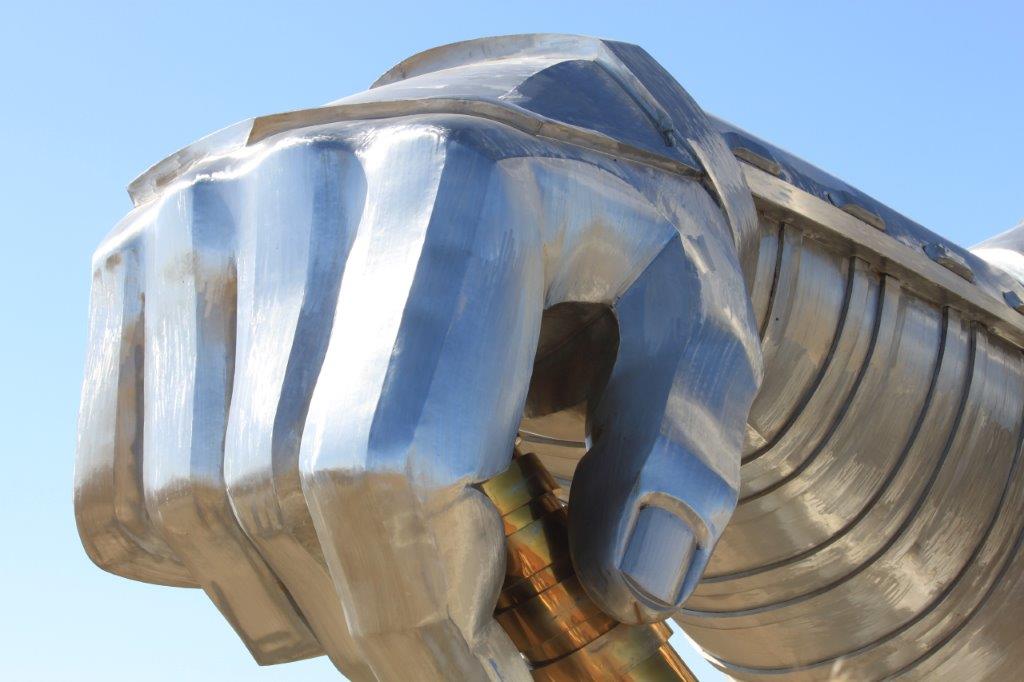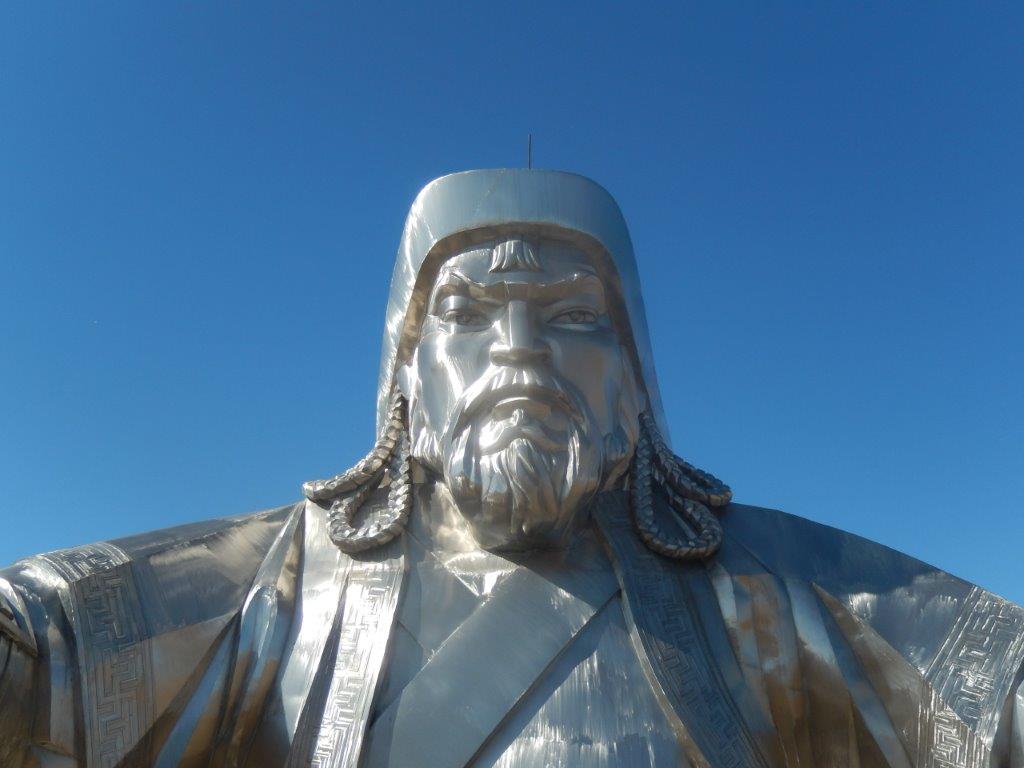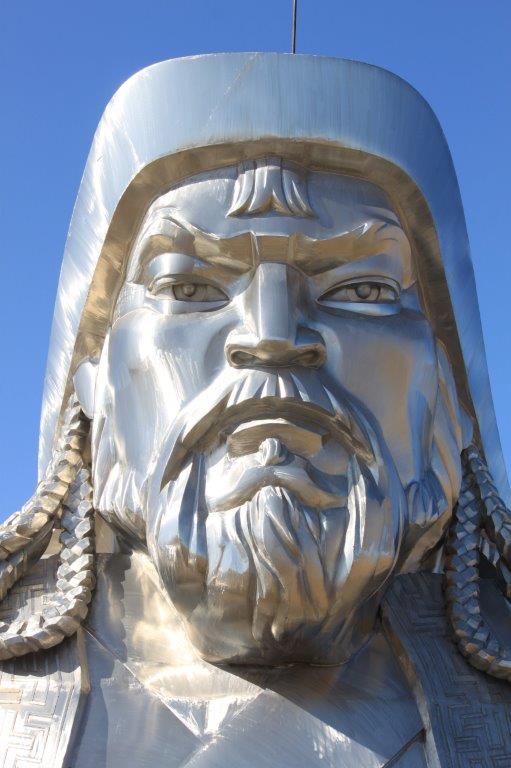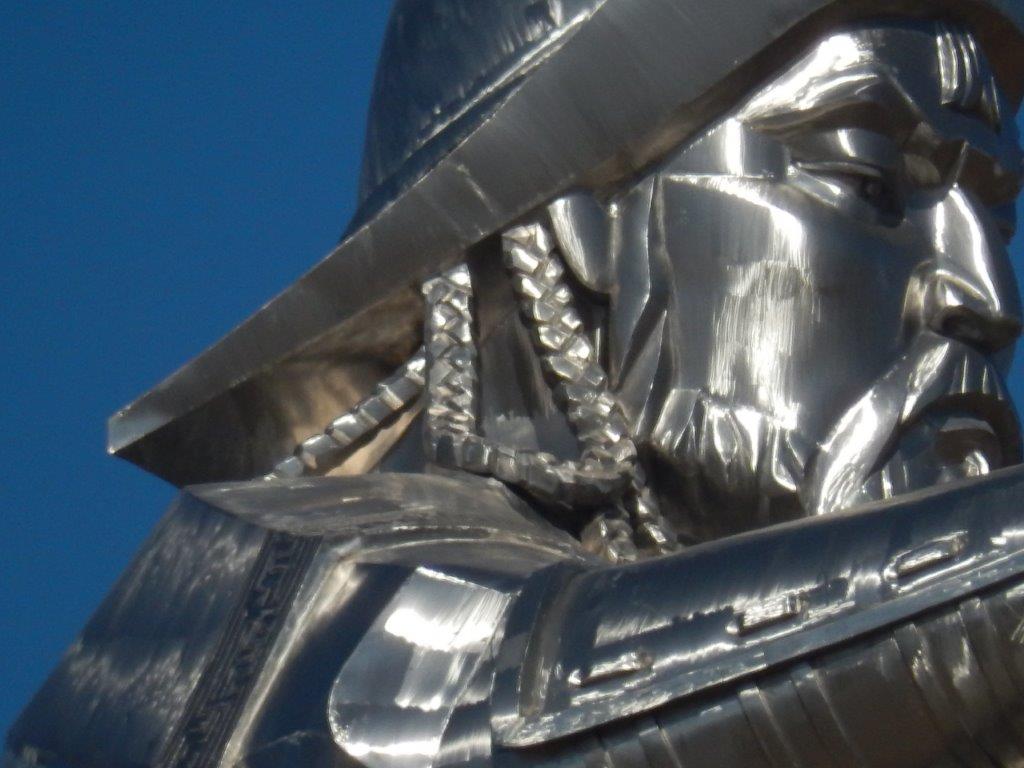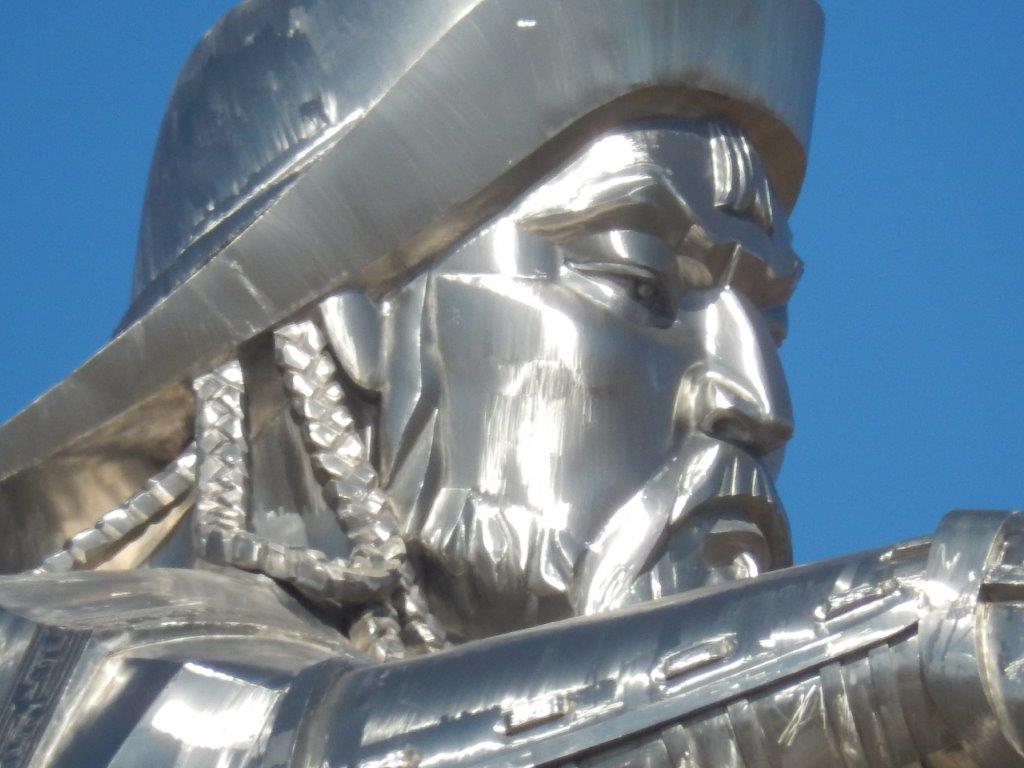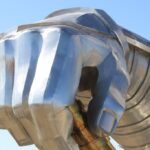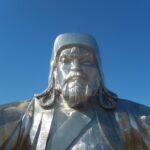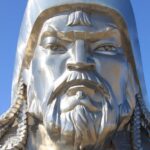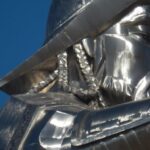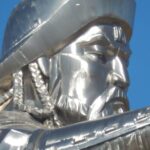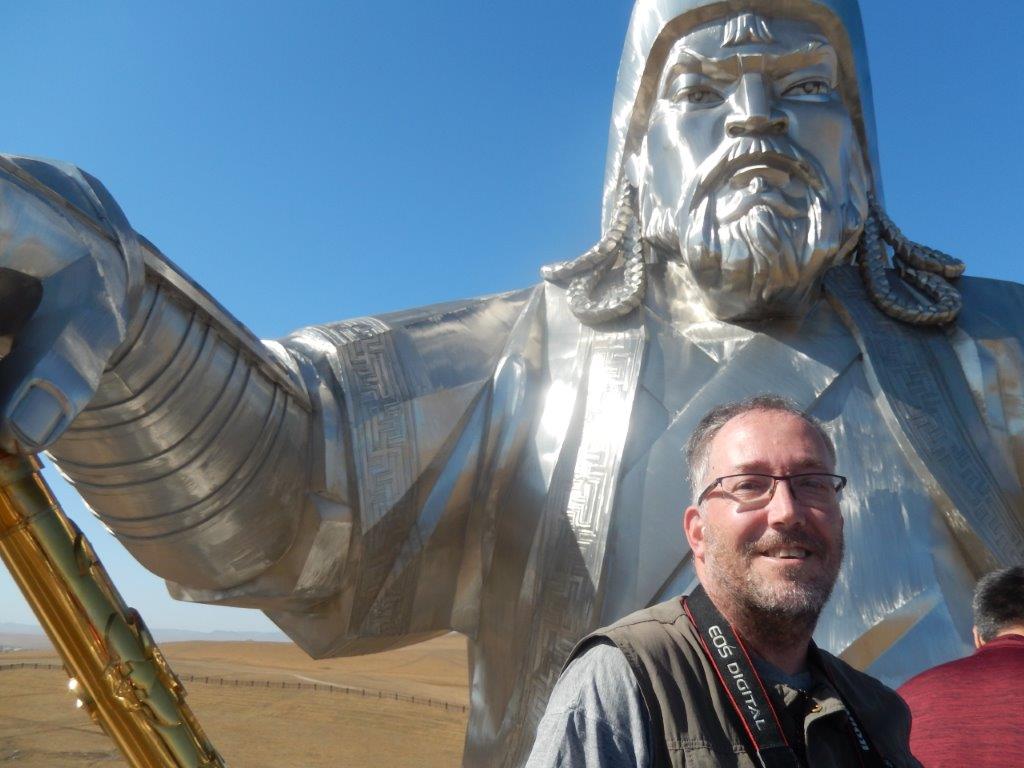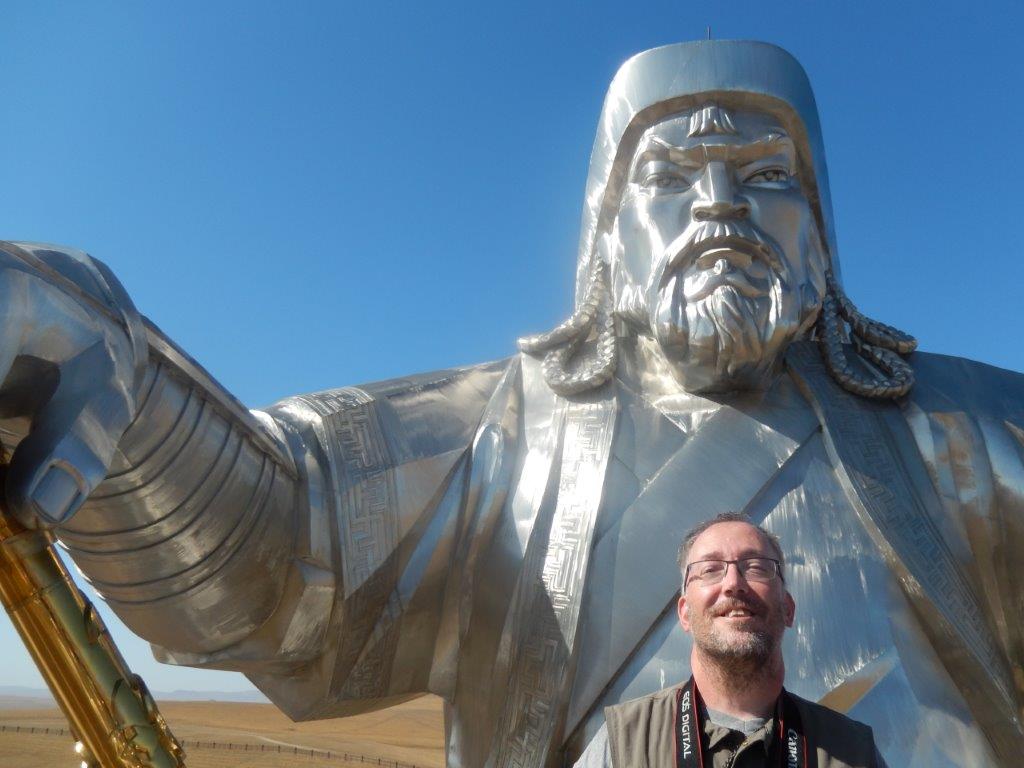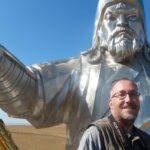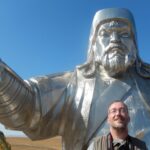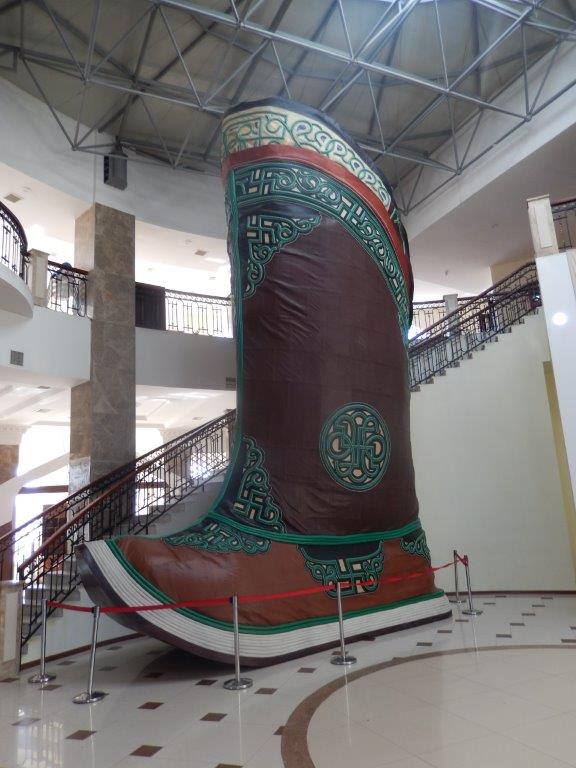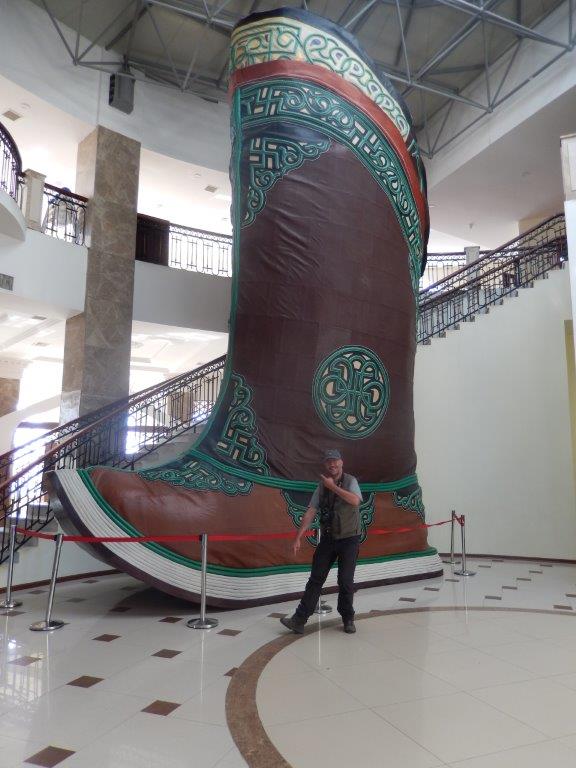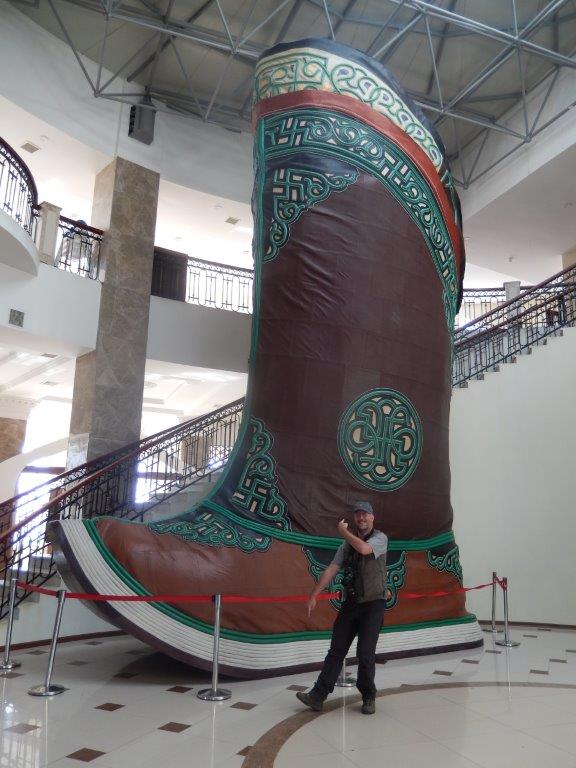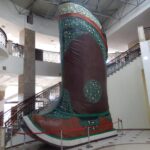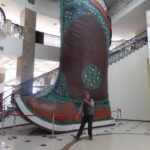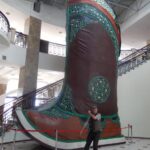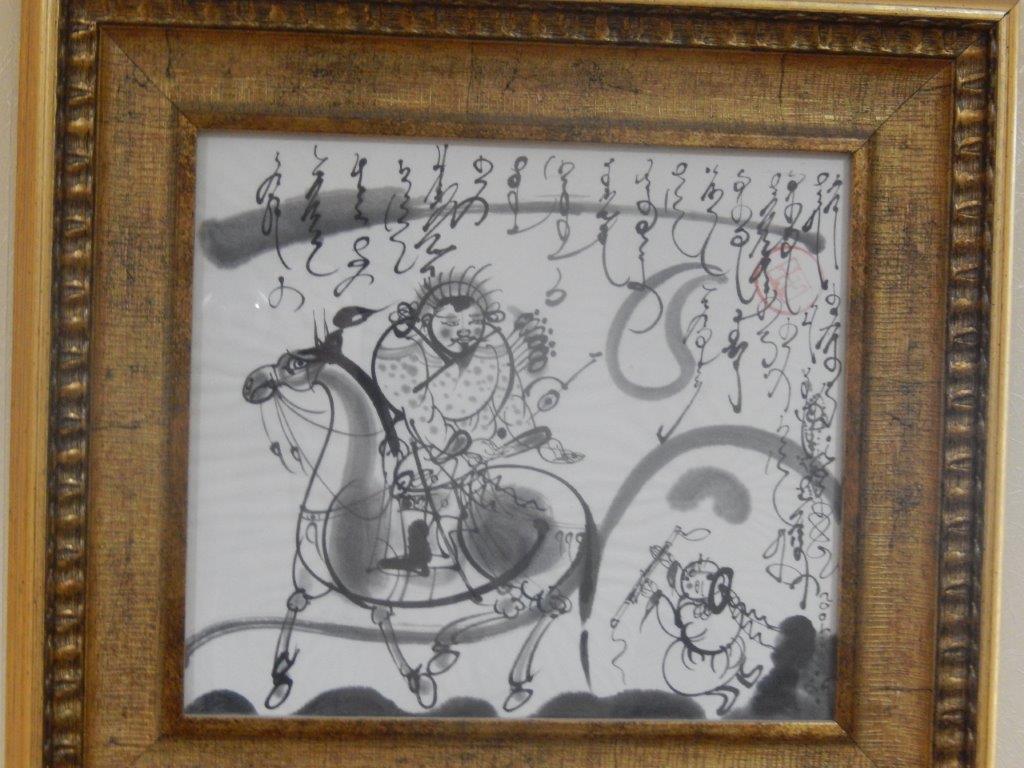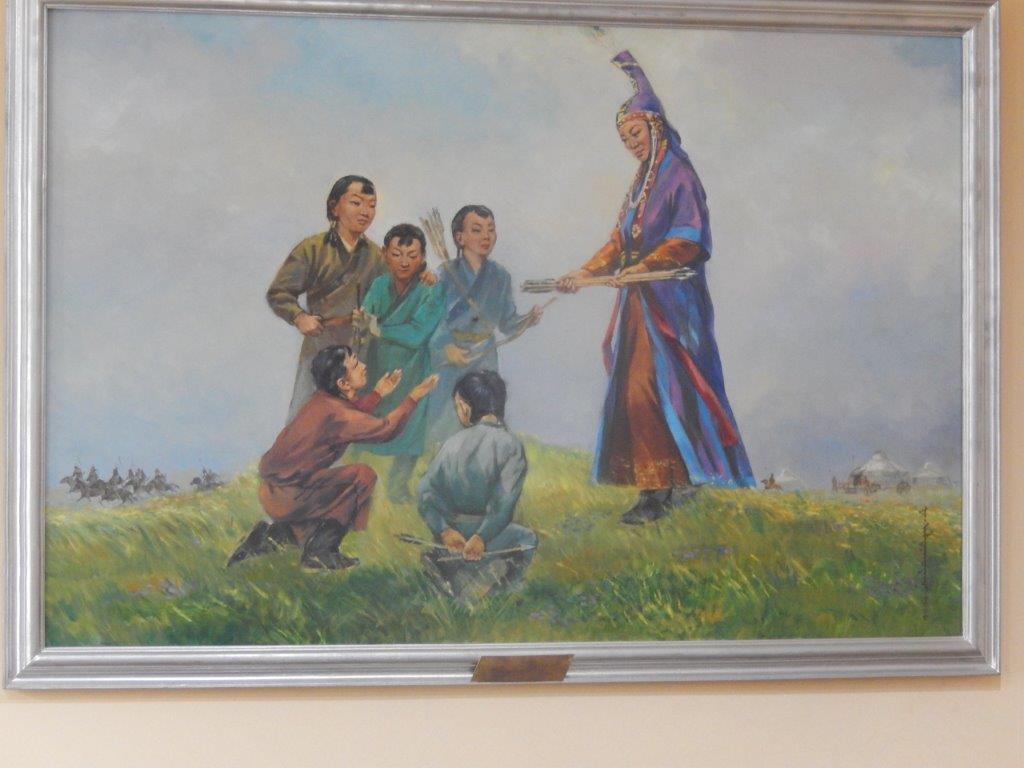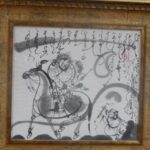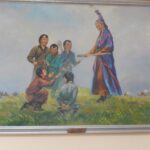Genghis Khan, Ruler of the Mongol Empire
After an early start, The Wandelgek travelled further east towards Ulaanbaatar, where he had planned for the rest of the day to visit this town, but he was informed that the Transsibirian Express was rescheduled and would not leave for Beying the next morning but the day after.
This meant a bit of rescheduling and thus The Wandelgek was now travelling around the north of Ulaanbaatar to travel a bit further east.
Ulaanbaatar is huge. It is the only really substantial city in Mongolia and houses 2 thirds of all Mongolians. More of the city in upcoming blogs.
That early in the morning, when there was almost no wind and the night had been cold, there was a cloud of what at first seemed mist, hanging above the city, but it wasn’t mist. It was smoke produced by the numerous little furnices that heated the 100 thousands of gers that made up the outer reaches of the city. Probably it was a mix of smoke and pollution produced by the traffic, because it seemed as if there was an everlasting traffic jam in the city center.
But The Wandelgek drove around…
At about 60 kilometers east of Ulaanbaatar, was the famous Genghis Khan Statue and that was where The Wandelgek was heading towards…
The Genghis Khan Equestrian Statue is a part of the Genghis Khan Statue Complex. The complex as a whole is not that impressive. Some of the building looked like they were already in decay and the stairs towards statues were not in a pristine state anymore. But is this really a bad thing? For the complex as a whole: Yes. But it also means that attention of visitors is directed towards its center where a magnificent statue of Genghis Khan is demanding attention. Beneath is a poster of the complex, showing what was intended, but never finished. A thing The Wandelgek noticed on more occasions in Mongolia. While driving through the country he saw really a lot of unfinished buildings. The local travel guide mentioned that often people just started building, but stopped as soon as the money ran out…
The Genghis Khan Equestrian Statue is a 131-foot (40 m) tall, stainless steel statue of Genghis Khan on horseback, on the bank of the Tuul River at Tsonjin Boldog (54 km (33.55 mi) east of the Mongolian capital Ulaanbaatar), where according to legend, he found a golden whip. The statue is symbolically pointed east towards his birthplace. It is on top of the Genghis Khan Statue Complex, a visitor centre, itself 10 metres (33 ft) tall, with 36 columns representing the 36 khans from Genghis to Ligdan Khan. It was designed by sculptor D. Erdenebileg and architect J. Enkhjargal and erected in 2008.
Visitors walk to the head of the horse through its chest and neck,…
…where they have a panoramic view over the surrounding landscape. One feature that really is noticeable is a large (although much smaller then the Genghis Khan statue) statue of an upright standing woman facing Genghis Khan. It is the statue of his mother looking right at him. I didn’t see anything similar for the father…
The main statue area will be surrounded by 200 ger (yurts), designed and arranged like the pattern of the horse brand marks that were used by the 13th century Mongol tribes.
Standing on top of the horses head not only provides a magnificent view over the surrounding area, but also brings you very close to Genghis himself…
And yes this provides travellers with a not to be missed opportunity for shameless selfies ?
The cost of the complex is reported to be US$4.1 million, spent by The Genco Tour Bureau, a Mongolian company.
Genghis Khan
Genghis Khan, born Temüjin; c. 1158 – August 18, 1227), was the founder and first Khagan-Emperor of the Mongol Empire, which after his death became the largest contiguous empire in history. He came to power by uniting many of the nomadic tribes of Northeast Asia. After founding the Empire and being proclaimed Genghis Khan (an honorary title possibly derived from the Turkic “tengiz” — sea, meaning “the oceanic, universal ruler”), he launched the Mongol invasions that conquered most of Eurasia, reaching as far west as Poland in Europe and the Levant in the Middle East. Campaigns initiated in his lifetime include those against the Qara Khitai, Khwarezmia, and the Western Xia and Jin dynasties, and raids into Medieval Georgia, the Kievan Rus’, and Volga Bulgaria. These campaigns were often accompanied by large-scale massacres of the civilian populations, especially in the Western Xia and Khwarazmian-controlled lands. Because of this, he is often depicted in a negative light by historians from these areas. By way of contrast, he was seen as a liberator by the buddhist Uyghur kingdom of Qocho, which willingly left the Qara Khitai empire to become a Mongol vassal. Genghis Khan was also portrayed positively by early Renaissance sources due to the incredible spread of culture, science and technological ideas by the Mongol Empire. By the end of his life, the Mongol Empire occupied a substantial portion of Central Asia and China. Due to his exceptional military successes, Genghis Khan is often considered to be one of the greatest conquerors of all time.
Before Genghis Khan died, he assigned Ögedei Khan as his successor. Later his grandsons split his empire into khanates. Genghis Khan died in 1227 after defeating the Western Xia. By his request, his body was buried in an unknown location somewhere in Mongolia. His descendants extended the Mongol Empire across most of Eurasia by conquering or creating vassal states in all of modern-day China, Korea, the Caucasus, Central Asia, and substantial portions of Eastern Europe and Southwest Asia. Many of these invasions repeated the earlier large-scale slaughters of local populations. As a result, Genghis Khan and his empire have a fearsome reputation in local histories.
Beyond his military accomplishments, Genghis Khan also advanced the Mongol Empire in other ways. He decreed the adoption of the Uyghur script as the Mongol Empire’s writing system. He also practised meritocracy and encouraged religious tolerance in the Mongol Empire, unifying the nomadic tribes of Northeast Asia. Present-day Mongolians regard him as the founding father of Mongolia.
He is also credited with bringing the Silk Road under one cohesive political environment. This brought relatively easy communication and trade between Northeast Asia, Muslim Southwest Asia, and Christian Europe, expanding the cultural horizons of all three areas.
Restaurant and shopping area
Beneath Genghis’s statue was a circular two storey building. The ground floor contained a large hall in which a representation of a larger-than-life boot of Genghis can be seen and I guess I’m trying to see whether the shoe fits ?
There was also a souvenir shopping area and the on walls were paintings and drawings about the life of Genghis Khan…
On the first floor was a restaurant where The Wandelgek had lunch. Good food?
After lunch The Wandelgek visited the cellar of the building. In it was really good museum with an interesting exhibition about the development of the ger/yurt through the centuries. I will blog about that in my upcoming blogpost.



